
Through the Looking-Glass, and What Alice Found There is a novel published on 27 December 1871 by Lewis Carroll, a mathematics professor at the University of Oxford, and the sequel to Alice's Adventures in Wonderland (1865). Alice again enters a fantastical world, this time by climbing through a mirror into the world that she can see beyond it. There she finds that, just like a reflection, everything is reversed, including logic.
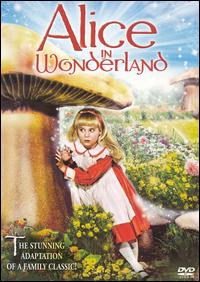
Alice in Wonderland is a 1985 American two-part made-for-television adventure family fantasy musical film of Lewis Carroll's books Alice's Adventures in Wonderland (1865) and Through the Looking-Glass (1871). An Irwin Allen production, it used a huge all-star cast of notable actors and actresses. The title role was played by Natalie Gregory, who wore a blonde wig for this miniseries. Alice in Wonderland was first telecast December 9, 1985, and December 10, 1985, at 8:00pm EST on CBS.
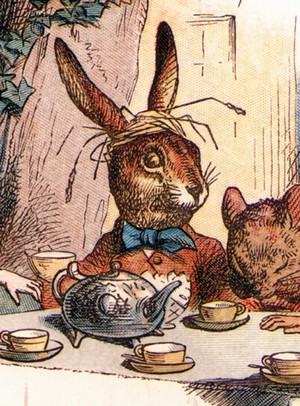
The March Hare is a character most famous for appearing in the tea party scene in Lewis Carroll's 1865 book Alice's Adventures in Wonderland.

The Queen of Hearts is a fictional character and the main antagonist in the 1865 book Alice's Adventures in Wonderland by Lewis Carroll. She is a childish, foul-tempered monarch whom Carroll himself describes as "a blind fury", and who is quick to give death sentences at even the slightest of offenses. One of her most famous lines is the oft-repeated "Off with his/her head!" / "Off with their heads!"

The White Rabbit is a fictional and anthropomorphic character in Lewis Carroll's 1865 book Alice's Adventures in Wonderland. He appears at the very beginning of the book, in chapter one, wearing a waistcoat, and muttering "Oh dear! Oh dear! I shall be too late!" Alice follows him down the rabbit hole into Wonderland. Alice encounters him again when he mistakes her for his housemaid Mary Ann and she becomes trapped in his house after growing too large. The Rabbit shows up again in the last few chapters, as a herald-like servant of the King and Queen of Hearts.

Vernon Rylands Parton was an English chess enthusiast and prolific chess variant inventor, his most renowned variants being Alice chess and Racing Kings. Many of Parton's variants were inspired by the fictional characters and stories in the works of Lewis Carroll. Parton's formal education background, like Lewis Carroll's, was in mathematics. Parton's interests were wide and he was a great believer in Esperanto.

Lewis Carroll's books Alice's Adventures in Wonderland (1865) and Through the Looking-Glass (1871) have been highly popular in their original forms, and have served as the basis for many subsequent works since they were published. They have been adapted directly into other media, their characters and situations have been appropriated into other works, and these elements have been referenced innumerable times as familiar elements of shared culture. Simple references to the two books are too numerous to list; this list of works based on Alice in Wonderland focuses on works based specifically and substantially on Carroll's two books about the character of Alice.

The Lion and the Unicorn are symbols of the United Kingdom. They are, properly speaking, heraldic supporters appearing in the full royal coat of arms of the United Kingdom. The lion stands for England and the unicorn for Scotland. The combination therefore dates back to the 1603 accession of James I of England who was already James VI of Scotland. By extension, they are also used in the arms of Newfoundland since 1637, the arms of Hanover between 1837–1866, and the arms of Canada since 1921.

Alice in Wonderland is a musical by Henry Savile Clarke, Walter Slaughter (music) and Aubrey Hopwood (lyrics), based on Lewis Carroll's books Alice's Adventures in Wonderland (1865) and Through the Looking-Glass (1871). It debuted at the Prince of Wales Theatre in the West End in 1886.

The Knave of Hearts is a character from the 1865 book Alice's Adventures in Wonderland by Lewis Carroll.

The Red Queen is a fictional character and the main antagonist in Lewis Carroll's fantasy 1871 novel Through the Looking-Glass. She is often confused with the Queen of Hearts from the previous book Alice's Adventures in Wonderland (1865), although the two are very different.
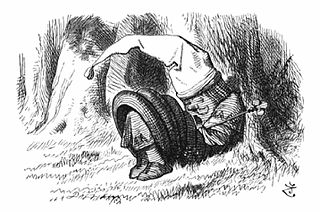
The Red King is a character who appears in Lewis Carroll's 1871 fantasy novel Through the Looking-Glass.

The White Queen is a fictional character who appears in Lewis Carroll's 1871 fantasy novel Through the Looking-Glass.
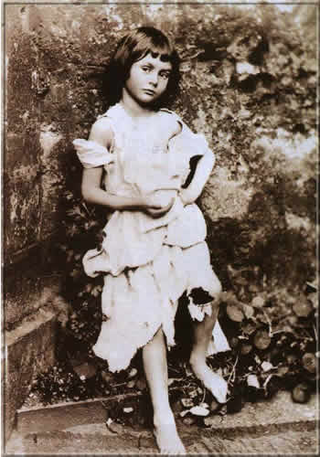
Through the Looking Glass is a chamber opera by the Australian composer Alan John to a libretto by Andrew Upton, based on Lewis Carroll's 1871 book and on the life of Alice Liddell, the girl for whom Carroll wrote the story's 1865 prequel, Alice's Adventures in Wonderland.
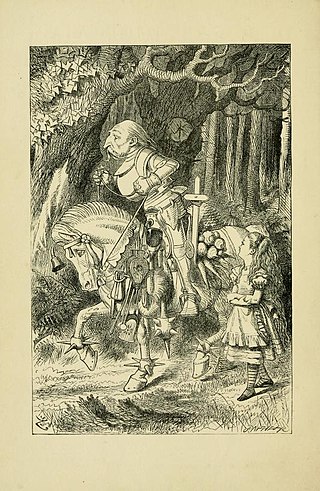
The White Knight is a fictional character in Lewis Carroll's 1871 book Through the Looking-Glass. He represents the chess piece of the same name. As imagined in John Tenniel's illustrations for the Alice stories, he is inspired by Albrecht Dürer's 1513 engraving "Knight, Death and the Devil."

The looking-glass world is the setting for Lewis Carroll's 1871 children's novel Through the Looking-Glass.

The Puppy is a fictional character in Lewis Carroll's 1865 novel Alice's Adventures in Wonderland. He appears in the chapter "The Rabbit Sends a Little Bill".
Alice in Wonderland and Through the Looking-Glass is a 2001 stage adaptation of Lewis Carroll's 1865 novel Alice's Adventures in Wonderland, and the 1871 novel Through the Looking-Glass. It was written by Adrian Mitchell.
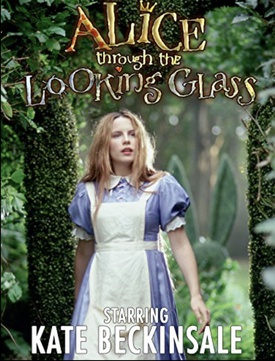
Alice through the Looking Glass is a 1998 British fantasy television film, based on Lewis Carroll's 1871 book Through the Looking-Glass, and starring Kate Beckinsale.

















